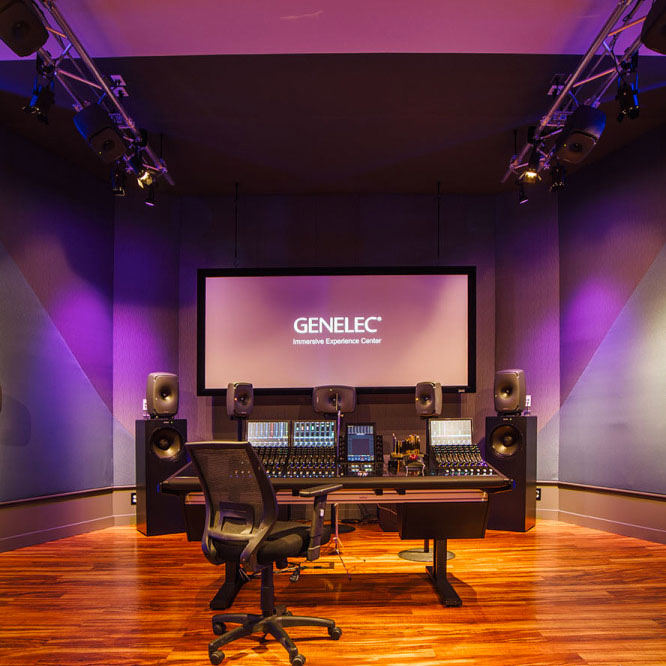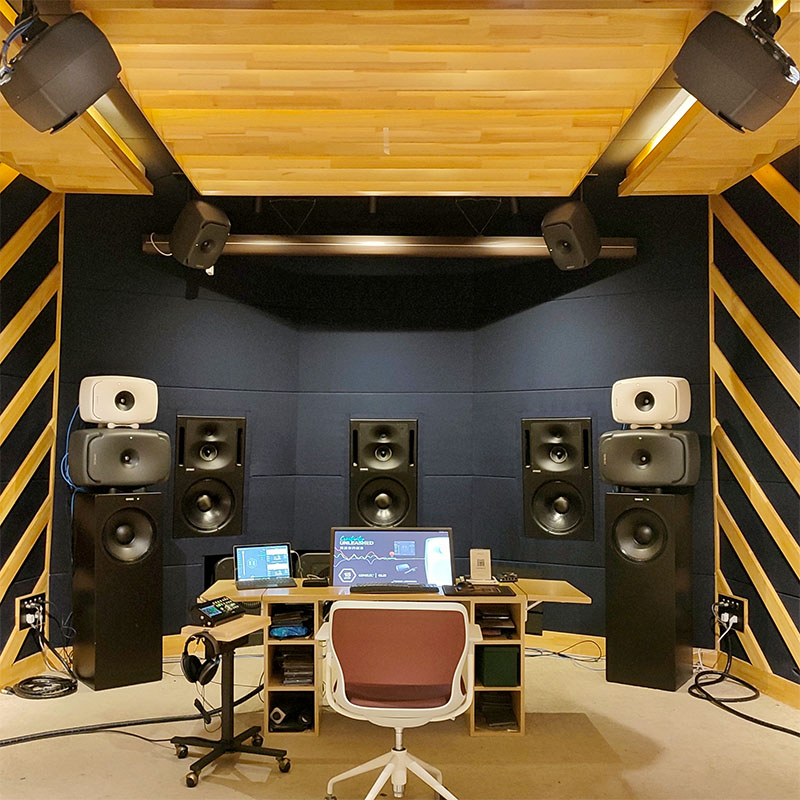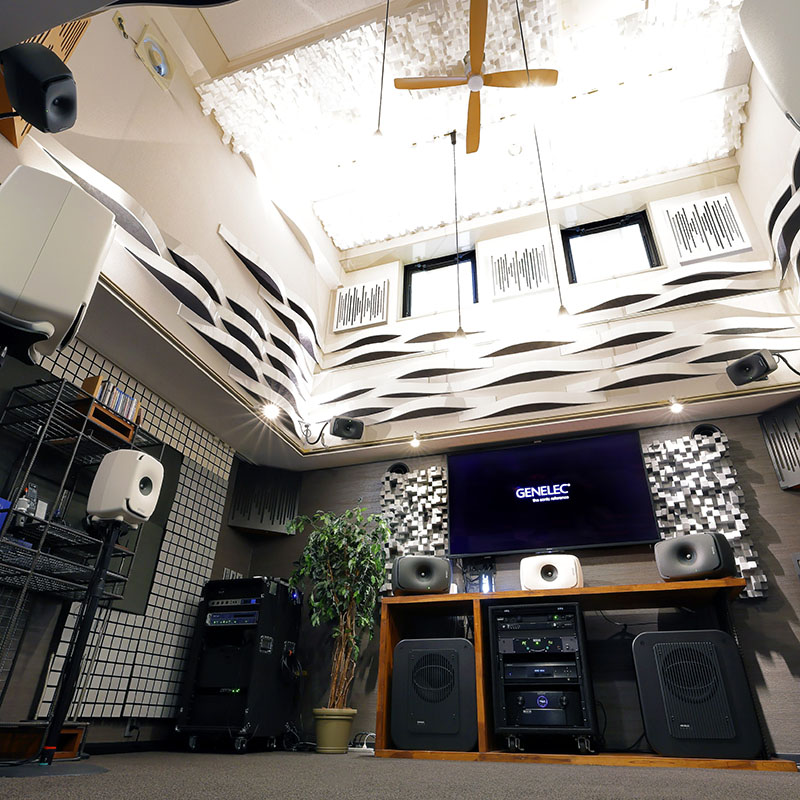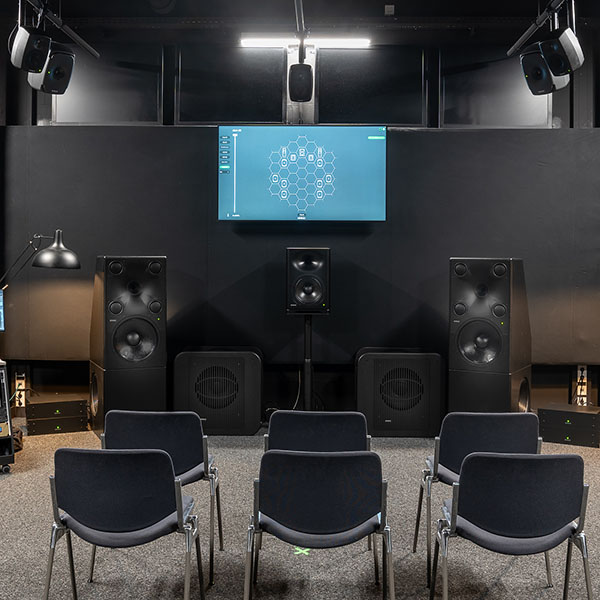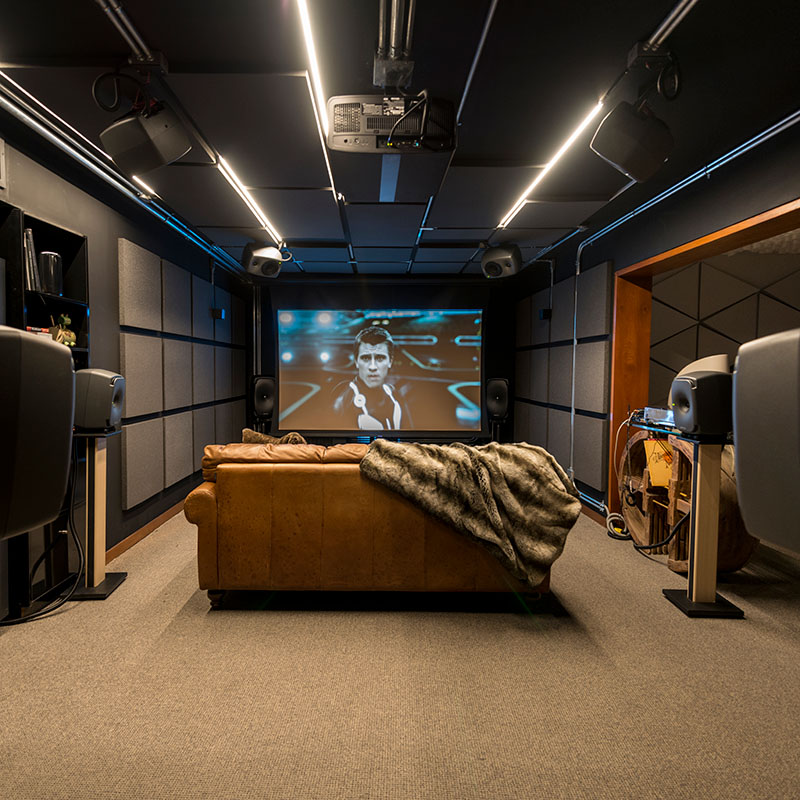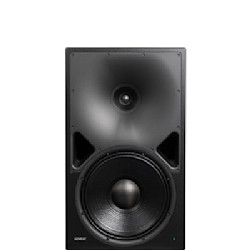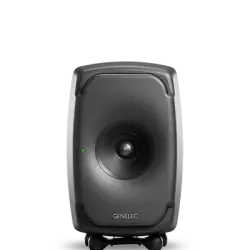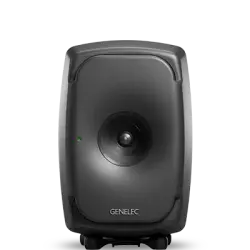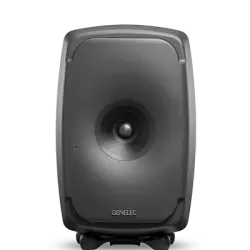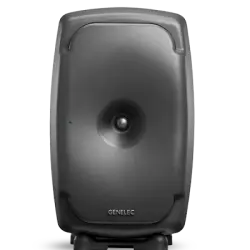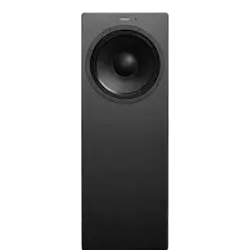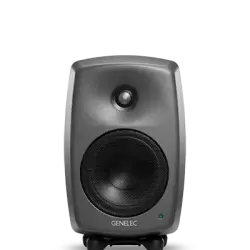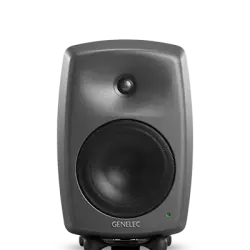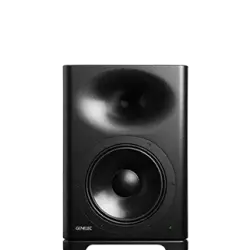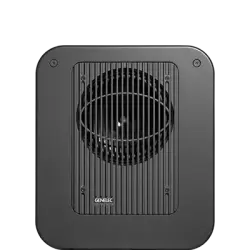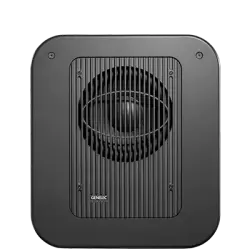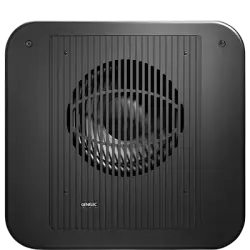Here you'll find a wealth of information to help you navigate the exciting world of immersive audio. Ready to get started?
Immersive Audio Hub

What is Immersive Audio?
Immersive audio provides a powerful sense of envelopment and realism that brings music, movies and computer games to life in a way that’s just not possible with traditional audio formats.
Also known as ‘spatial audio’, ‘3D audio’ or ‘360° audio’, immersive audio makes use of multiple channels to completely surround the listener in two, three or more ‘layers’.
With a growing number of immersive audio formats, and support from major players in the worlds of music and video streaming, the demand for immersive content has never been greater. Now’s the time to be part of it!

How to listen to Immersive Audio
The best immersive audio experience is always achieved via a carefully calibrated loudspeaker system in an acoustically well-designed room. That's why all our Smart Active Monitors and Subwoofers integrate closely with GLM calibration software to create a scalable immersive monitoring system that's perfectly optimised for playback level, frequency response and time-of-flight.
This means that you can trust your immersive mixes to translate beautifully to your listeners, whether they’re experiencing them on loudspeakers, soundbars, smart speakers or binaurally via headphones.
And if headphones are part of your immersive monitoring workflow, then our Aural ID technology will create a listening experience you can really trust – allowing you to move seamlessly between your monitors and headphones.
Here you'll find a wealth of information to help you navigate the exciting world of immersive audio. Ready to get started?
Immersive Audio Formats

Dolby Atmos
Launched in 2012, Dolby Atmos is a widely supported object-based system with up to 128 individual tracks and 64 speaker feeds.
• Two layered system with both surrounds and height channels.
• Typically up to 7.1.4 Home reproduction, but larger speaker layouts are possible.
• Up to 64 discrete speaker feeds for Cinema reproduction.

Dolby Atmos Music
Dolby Atmos Music was introduced in 2019 to bring Atmos to music streaming services, and offers a similar set of workflow tools.
• Two layered system with both surrounds and height channels.
• Typical recommended speaker setups are 7.1.4, 9.1.4 and 9.1.6.
• Can be also experienced on headphones and certified smart speakers.
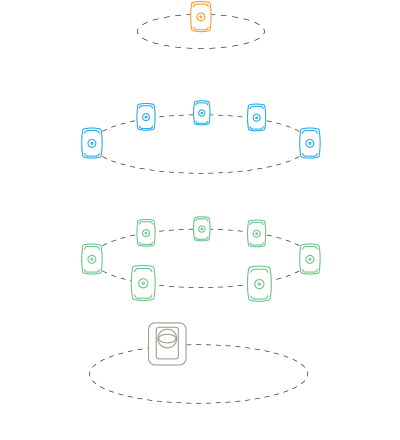
Auro-3D
Introduced in 2006, Auro-3D is a channel-based three layer system which comes in a variety of formats.
• Three layer system with surround, height and VoG channels.
• Typical formats from 7.1.2 to 7.1.6.
• Object-based ‘AuroMax’ extension for additional channels
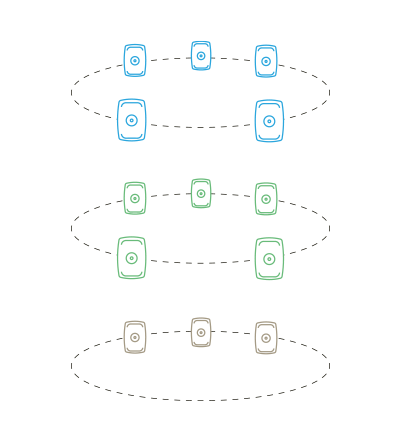
360 Reality Audio
Introduced in 2019 by Sony, 360 Reality Audio uses object-based spatial technology to deliver a full 360-degree audio experience.
• Three layer system with channels above, below and surrounding the listener.
• Can be experienced on certified loudspeakers and also on headphones, via compatible music streaming services.
• Does not utilise a dedicated LFE channel, but subwoofer(s) can be used for bass management.

MPEG-H Audio
Developed by MPEG for broadcast and streaming applications, the MPEG-H Audio system brings immersive sound and advanced personalization and accessibility features.
• The scalable architecture allows flexibility in number of channels.
• Audio Objects enable dialog enhancement and personalization.
• Empowers the creation and delivery of a high-quality immersive music experience.
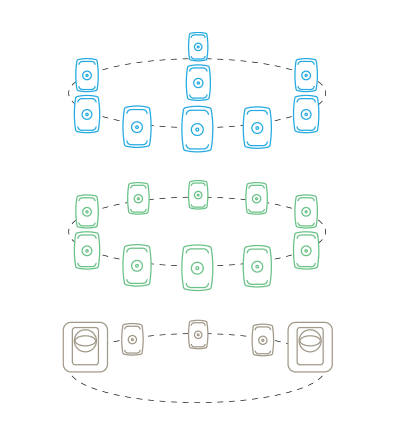
22.2
Developed by Japanese broadcaster NHK, the three layer channel-based 22.2 system forms the surround sound component of NHK’s ultra HD television system.
• Three layer system for broadcast and home use.
• Fixed number, fixed channel-positions for production.
• Full or condensed home reproduction systems.

DTS:X
DTS:X was launched in 2015. Like Dolby Atmos, it is an object-based system - but without prescribed speaker configurations.
• Two layer system with surround and height channels.
• Audio rendering based on number and position of speakers available.
• Supports up to 32 speaker locations and 7.2.4 channels.
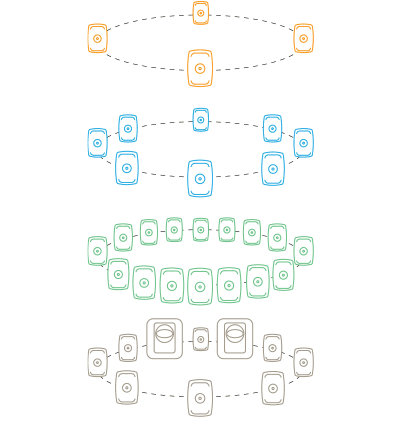
ITU-R and Pure Research
ITU-R is researching the requirements for realistic 3D sound for UHDTV. Pure research is focussed on in-room and binaural sound with and without movement.
• At least three vertical layers and one or more subs.
• Typically between 11 and 80 main channels.
• ITU-R is collaborating with NHK (Japan), SMPTE (USA) and EBU (Europe).
Immersive Audio Tutorials
What is Immersive Audio?
Immersive Speaker Setups
The Studio Setup
Immersive Audio at Home
Immersive Audio Production Tools
Genelec Immersive Room Solution Examples




Need help in finding the right immersive solution?
Send us a message, and we'll be in touch with you.

Configuration and Calibration
To ensure reference listening conditions and good translation between rooms or headphones, every monitor in an immersive system needs to be adjusted after placement. Genelec’s GLM application offers a sophisticated, integrated solution, based on decades of research combined with data from thousands of listening rooms.
When setting up an immersive system, calibration after placement is paramount. Otherwise, even the same type of monitors will exhibit different tonal balance. Monitors may also be at different distances from the listener; thereby causing further difficulty with level, delay and phase. During setup, GLM easily compensates for such problems. It allows further adjustment by the user to accommodate standards (e.g. X-curve), listening level or personal preferences, and it scales freely so more channels can be added.
Monitor Control
In daily operation, GLM doubles as a comprehensive Mac or PC-based monitor controller that immediately scales with your setup requirements; for instance if changing from stereo to 5.1, 7.1.4, 22.2, 64 channels or higher.
GLM enables you to calibrate your listening level to various loudness standards, and invoke solo and mutes. You can switch between formats, monitoring systems and primary listening positions, and move entire systems in time to retain sync with picture. The list goes on, and in each case your integrated GLM monitor controller won’t burden Pro Tools or any other immersive playback device.
Read More About GLM ›
System Components
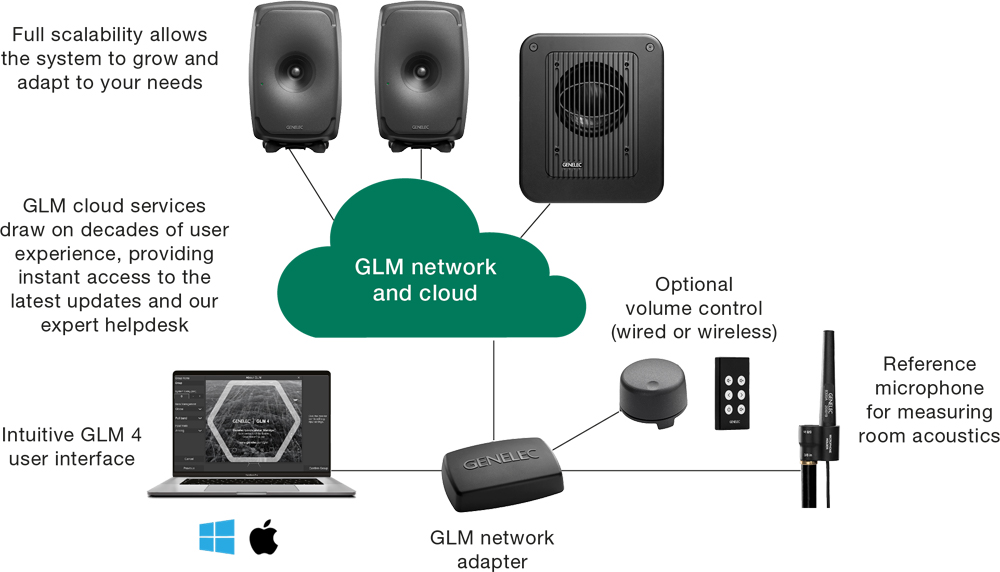

Research and Experimental Systems
Around the world, academic institutions and commercial organisations are engaged in extensive immersive audio research; an explosion driven by new hi-spatial distribution formats, and promises of commercial return for the first companies to solve the challenges of personal (binaural) delivery, i.e. to provide a credible, immersive headphone experience.
Satisfactory binaural delivery for film, gaming and VR does not rely only on presenting sources with azimuth, but also the reflections we always hear under natural conditions. Direct sound and reflections furthermore have to be rendered specifically for each individual listener, including realtime head and body movements. The processing burden on a binaural reproduction system is therefore significant, and the data it is built on must be as accurate as possible.
A fine immersive experimental system is at the heart of any subjective test and data gathering. In this respect, Genelec point source monitors, known as “The Ones”, are in their own category entirely. By avoiding the colouration of direct sound and reflections, which is not possible with a conventional monitor design, the most serious obstacle in immersive research is avoided. Not surprisingly, there has been a surge in microphone production and immersive studies based on The Ones.
For research where the requirement for ideal directivity in both planes is less pronounced, the range of Genelec models to choose from is wider. Simply browse the Genelec website for the full range, and notice how the benefits of GLM in-situ adjustments are available to all Genelec Smart Active Monitors and Subwoofers.





